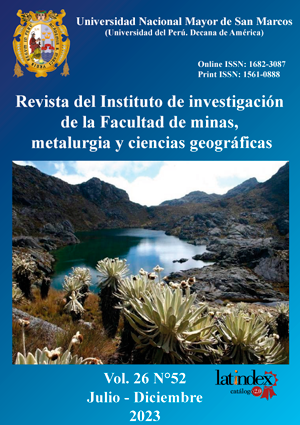Management of hazardous solid waste during the hydrocarbon spill in Ventanilla
DOI:
https://doi.org/10.15381/iigeo.v26i52.25609Keywords:
Hydrocarbon spill, cleanup, Pampilla, hazardous solid waste, VentanillaAbstract
The investigation constitutes an analysis of the management of hazardous solid waste during the hydrocarbon spill in Ventanilla. The method used is descriptive and comparative, consisting of the search, evaluation and analysis of the facts. Inadequate waste management was evidenced during the hydrocarbon clean-up work. After the accident occurred, the quantity and physical composition of the waste generated were not strictly accounted for, a waste hierarchy must be defined due to its dangerousness, prioritizing the separation of waste at the source of generation, and the prevention of secondary pollution. Contingency planning must incorporate handling and storage at the source: temporary storage with impermeable containers, transport through clearly defined and signposted accesses, and define final disposal in secure landfills. It is concluded that hazardous solid waste is the responsibility of the generator, under the principle of Internalization of Costs and Polluter-Payer. Waste management was inadequate due to lack of infrastructure and equipment little concurrent support from the State, limited staff training; and lack of multisectoral work with defined roles and functions. The effects caused were informal activities that put the recovery of the ecosystem at risk and limited the opportunity to take positive lessons.
Downloads
Published
Issue
Section
License
Copyright (c) 2023 Alberto Huiman Cruz, Adriana Lizet Coro Guevara, Elias Eric Torpoco Beltrán, Dayana López La Torre, Jean Bryan Iberos Jiménez, Keth Lee Jacob Gallegos Blas, Patricia Alejandra Nieto Medina, Rachel Lucia Huamán Ramos, Roger Allanpol Nina Tueros, Rubén Anderson Guerra Infanzón

This work is licensed under a Creative Commons Attribution 4.0 International License.
AUTHORS RETAIN THEIR RIGHTS:
a. Authors retain their trade mark rights and patent, and also on any process or procedure described in the article.
b. Authors retain their right to share, copy, distribute, perform and publicly communicate their article (eg, to place their article in an institutional repository or publish it in a book), with an acknowledgment of its initial publication in the Rev. Inst. investig. Fac. minas metal cienc. geogr.
c. Authors retain theirs right to make a subsequent publication of their work, to use the article or any part thereof (eg a compilation of his papers, lecture notes, thesis, or a book), always indicating the source of publication (the originator of the work, journal, volume, number and date).






